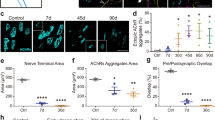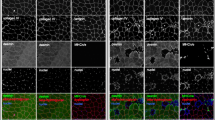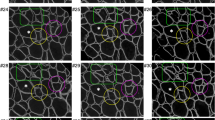Abstract
Extensor digitorum longus (EDL) muscles from 2- to 28-day-old rats were grafted into EDL muscles of adult inbred recipients (n = 8). At 1–6 months after the operation, experimental muscles were excised and the ultrastructure and innervation of regenerated muscle spindles was examined. Regenerated muscle spindles (n = 36) in isografted EDL muscles contained 4.3 ± 0.2 (mean ± SEM) encapsulated muscle fibres. These “intrafusal” muscle fibres lacked nuclear bag and nuclear chain accumulations, which are characteristic of normal muscle spindles; thus, they rather resembled thin encapsulated extrafusal muscle fibres. In the same sample, myelinated axons were found in 33 (92%) muscle spindles, but no sensory terminals were found. These findings demonstrate that regenerated spindles in isografted EDL muscles were not reinnervated by spindle-specific sensory axons, but exclusively by motor axons. Typical intracapsular motor endplates (MEPs) were found in one third of regenerated spindles examined. Their motor terminals contained accumulated mitochondria and synaptic vesicles. As is characteristic for MEPs, axolemma and sarcolemma were separated by a synaptic cleft about 60 nm wide that contained a basal lamina. The underlying sarcolemma formed either small infoldings or none at all, and the subsynaptic area contained only small subsarcolemmal accumulations of mitochondria. It is apparent that the structures described here as “regenerated muscle spindles” do not perform their normal physiological function as stretch receptors because they lack the sensory innervation. The present results show that regeneration and reinnervation in heterochronous isografts corresponds to that previously described in autotransplanted free muscle grafts. The results also show that, during muscle spindle regeneration, intrafusal satellite cells develop into extrafusal-like muscle fibres, apparently due to their motor innervation.
Similar content being viewed by others
Author information
Authors and Affiliations
Additional information
Received: 15 June 1999 / Revised, accepted: 20 December 1999
Rights and permissions
About this article
Cite this article
Soukup, T., Novotová, M. Ultrastructure and innervation of regenerated intrafusal muscle fibres in heterochronous isografts of the fast rat muscle. Acta Neuropathol 100, 435–444 (2000). https://doi.org/10.1007/s004010000194
Issue Date:
DOI: https://doi.org/10.1007/s004010000194




